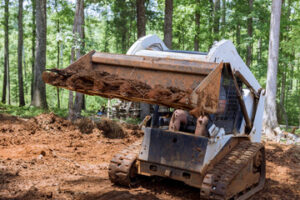Pokemon 151 Booster Bundle is a franchise of fictional creatures that people can catch and train. Originally developed by game designer Satoshi Tajiri, the series has grown into a wildly successful media empire that includes TV shows and trading card games.

The franchise has even made a comeback with Pokemon GO, a location-based smartphone game that uses augmented reality to make it look like the animated characters are actually there.
Collectibles are valuable reminders of childhood adventures and connect people who share a common interest. Pokemon collectibles have a special place in the hearts of fans and serve as creative keepsakes, artistic souvenirs, and gifts that link generations of followers. Collectors can trade items with other collectors, participate in fan clubs and events, and connect online to form a sense of community. Pokemon collectibles can be purchased from many locations, including specialty card shops, online marketplaces, and retail stores. It is important to buy from reputable sellers to avoid counterfeit items.
The Pokemon trading card game (TCG) has experienced a resurgence during the COVID-19 pandemic, driving new interest and creating a thriving global community. This revival was fueled by a combination of factors, including the rise of social media and high-profile influencers. The resurgence has also boosted demand for Pokemon TCG cards and increased their value. As a result, the Pokemon card market has become an increasingly popular hobby for collectors and investors.
There are many factors that impact the value of a Pokemon card, including its condition, rarity, and popularity. Collectors should look for cards with pristine condition, which include no damage or tears. They should also avoid cards with ink loss areas or print skips, and check the card stock paper thickness. Some Pokemon cards are printed on see-thru paper, which should be avoided because it can affect the value of the card.
Pokemon merchandising is a huge business, with the franchise boasting hundreds of thousands of unique products. The most popular merchandise items include plush toys and cards, which are often sold in sets of six or more. While some of these items are designed for children, some are more advanced, such as action figures and board games.
The Pokemon TCG’s resurgence has also led to the creation of a variety of alternative collector’s tools, such as proxies and custom-printed cards. These tools can help mitigate the effects of price inflation and supply shortages, while offering a more accessible way for fans to enjoy their hobby. In addition, the emergence of digital Pokemon cards could introduce new opportunities for collectors. These digital assets would be verifiable, tradable, and uniquely identifiable, allowing them to compete with physical collectibles in the burgeoning NFT market.
TV show
Pokemon has captivated kids and adults alike for 25 years, crossing age and cultural boundaries to appeal to people from all walks of life. While many folks may find the fantasy violence to be disturbing, others have embraced its messages about choosing the right path in life and peacefully resolving differences before they start.
It’s been a big year for Pokemon, with Ash Ketchum achieving his day one goal as the Champion of the Pokemon League. While that essentially marks the end of an era, it doesn’t mean the show is going anywhere, with two new protagonists ready to take over for the aging Ash.
The first episode of Pokemon aired in April 1997, and it was so popular that the series soon began airing on Saturday mornings. The show follows 10-year-old boy Ash Ketchum, his brash rival Pikachu, and his group of friends as they travel across the Pokemon world. The characters meet up with gym leaders, island kahunas, and other trainers in their quest to become Pokémon masters.
Throughout the show’s run, there have been several episodes that were pulled from rotation because of their controversial content. These include the notorious “Denno Senshi Porygon” episode, which caused 685 children to experience seizures and seizure-like symptoms due to a flashing light sequence. The episode has since been recut, but it is still censored in most countries.
The original Pokemon television series ran for 25 years and spawned multiple spin-off shows and films. The franchise also has a plethora of video games, merchandise, and other media, including a live-action film called Pokemon: Detective Pikachu. The show’s success has made it the fourth longest-running animated series in history, behind The Simpsons, Arthur, and South Park. The show has even received some criticism from its own creators for promoting excessive violence. It has also been criticized by parents and psychologists for its lack of parental guidance and overly-abundant commercialism. Despite these concerns, Pokemon has managed to reach a worldwide audience and continues to be one of the most popular kids’ series on TV.
Games
Pokemon started out as a video game for Nintendo’s handheld console and became a huge franchise that encompassed TV shows, trading cards, and toys. In the games, players act as Pokemon trainers, obtaining cartoon monsters that they train to battle each other. The video games encourage physical activity and help develop motor skills, as well as cognitive skill such as short-term memory, concentration, and verbal working memory.
The popularity of Pokemon continued to grow with a new generation of gamers, and the franchise adapted to keep up. In 2006, Pokemon DS launched, featuring a touchscreen and stereoscopic capabilities. In 2013 the DS line of consoles was replaced with a new handheld console known as the Nintendo 3DS, which utilized a larger screen and more advanced graphics. In 2016, Pokemon GO launched, using augmented reality technology to let users play the game in their neighborhood with animated monsters overlayed on their smartphone screens. This groundbreaking game was a hit, soaring to the top of the App Store downloads chart and smashing record sales for Nintendo.
Despite the decline of the console market, the Pokemon brand continues to thrive with a plethora of mobile games and apps that appeal to different age groups. The wildly popular Pokemon TCG Pocket, which combines the Pokemon TCG with a mobile gaming experience, is a testament to how versatile Pokemon can be. With a simplified rule set and nostalgic artwork, the game is sure to please both TCG fans and those who are new to the genre.
Another recent success is the Pokemon Snap application, which lets users take pictures of their surroundings and then see a variety of Pokemon occupying those spaces. The game encourages mindfulness by requiring players to observe the world around them and then interact with it. It also helps develop social interaction as it connects people who are in the same area and encourages sharing of photos with friends. The app is available on the iOS and Android platforms and is a great way to pass the time while on the move. This game is a perfect way to encourage your kids to explore their neighborhoods while learning about the history and culture of the places they visit.
Let them take the lead
Choosing the right lead is one of the first steps to making a competitive team. Picking a Pokemon that can take the lead in the current metagame is not easy, and it’s usually a process of trial-and-error. However, picking a good lead can make all the difference in how a team performs.
The first thing to consider when selecting a lead is the type of team you are running. Some teams, such as defensive cores, may not need an overly-specialized lead. These leads may sacrifice Turn 1 effectiveness in favor of late game usability. On the other hand, offensive teams will likely rely on their lead for entry hazard support.
Another important consideration is the type of moves your lead uses. Most leads will use either status moves or attacks that can be passed on to sweepers. For example, a Ferrothorn lead will pass its Taunt to a sweeper like Nidoqueen or Forretress, while a Gorebyss lead will use Baton Pass to activate Rain or Swift Swim.
Finally, you must take into account your opponent’s counters to the lead. For instance, if you are playing a Defiant/Competitive team, your opponent will probably lead Incineroar + a mon that can OHKO your Defiant, such as Metagross with an Occa Berry or Heatran. In addition, if you are playing a Weather Balance team, your opponent will probably lead Incineroar into a mon that can quickly deny setup, such as Landorus into Arcanine or Glimmora. This means you must have a strong counter to these common leads, or else they will likely win the game.








